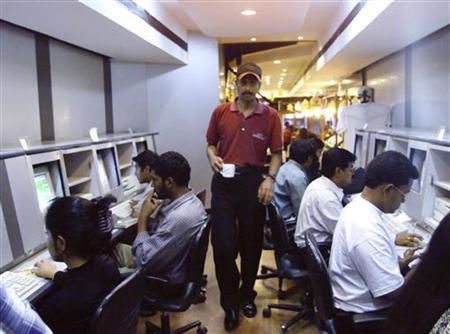By Mrinank Verma
The Indian Information Technology and Business Process Management Industry generated a revenue of 118 billion USD by far this year showing a tremendous growth of 8.2 % over the last year’s 109 billion USD. It is estimated that the revenue will grow beyond USD 220 billion by 2020. This growth is largely due to service export. IT sector accounts for 64% of this huge revenue, while only 18% of the revenue came from Engineering , Research and Development Sector. Small sized enterprises and emerging players, numbering around 17,000, account for 20% of the total revenue, while the mid-sized players, numbering around 120, account for 40 % of the revenue. The remaining 40% is attributed to large 11 players like Tata Consultancy Services, Wipro, HCL Infosystems etc. Relative Industry Share of IT-BPM sector is 8.1 % of the total GDP. Also, IT-BPM is the largest private sector employer of the country with more than 3.1 million employees and the 4th largest urban women employer, employing more than 1 million women.
Such accolades clearly demonstrate India’s dominance in the worldwide IT-BPM market, but strikingly, domestic market has shown a negative growth of 1.2%. A single digit growth is forecasted for this year in the domestic market. There are two main causes behind the retreating domestic success. One is that the country is losing its best Computer professionals to the rest of the world. Second, although India is the greatest contributor to the world in IT industry, we still depend on exports. The main reason behind this is the lack of innovation and less availability of skilled management in the top hierarchy of the indigenous IT industry.
Let’s delve into why professionals are leaving the country. One reason is the better job options and higher salaries being paid by companies outside India. This is because the domestic software engineering sector although is flourishing, is relatively new and more focused on the adaptation of already available softwares. Such jobs usually don’t require a very high level of expertise and pay less salary. Consequently, jobs for experts are growing slower than jobs for lesser skilled section of professionals. Product development accounts for just 18% of the total annual earning, and the domestic scenario is even worse.
The migration of Indian IT companies to mainstream product development is not happening any time in the near future, this, primarily can be attributed to lack of innovation culture amongst the top hierarchy of the firm, and, less availability of skilled management graduates in the country. However, what might possibly happen is, global multinationals that are currently outsourcing services and back office jobs to India, might outsource more of higher level jobs in Software Development Life Cycle like requirement analysis and architecture design. The other opportunity is, Indian subsidiaries of global multinationals might take up significant chunk of the product development than what they are currently doing, this, however, is not happening currently because, the global IT firms are still not comfortable in working out a way to extract high end work from Indian companies.
Another discouragement for the professionals is the slow rate of increase in the number of public sector jobs for them. The current number of jobs for IT and Computer professionals in the public sector is low. Also, the government heavily relies on contracts for many such jobs, which don’t pay a good dividend and financial security. This discourages the input and sustenance of computer professionals in the government machinery. This hampers research and development.
Moreover, the permanent job holders in the government sector are actually not monitored properly and effectively by the bureaucracy, partly due to the fact that the bureaucracy is mostly computer illiterate. By illiteracy here I mean that they don’t have adequate knowledge in order to effectively guide, manage and monitor the lower levels of the system in the departments of IT and Software. This makes the machinery sloppy and disorganized where, officials can exploit resources and get away with it unharmed. This hampers the growth of public sector in this field slowing the rate of growth of jobs for experts and professionals in the government.
IT is the driving force behind the employment scenario in this sector, a large part of which is now dependent on foreign interest and jobs being sourced to India from overseas, that provide low salaries and bad job profiles, because such foreign employers require a cheap workforce with par intellectual skills and fluent English. Diminishing incomes of IT executives thus can be linked to the increasing number of such employers looking towards India, where a large part of urban population is fluent in English or require little training to achieve adequate fluency. This advantage of fluent English speaking workforce does not guarantee to sustain itself in the longer run as cheaper economies of the world are trying to bridge the English gap and it is speculated that more and more such jobs will be transferred to these cheaper economies, thus increasing unemployment and degrading the current workforce to a greater extent.
It is time we think of solutions to our sloppy public IT infrastructure and bureaucracy. We need strong people and a genuinely skilled workforce to tackle such problems.
The domestic product development scenario can be improved if we allow more entrepreneurs to create more enterprises by improving the processes required to set up businesses. SMAC (Social, Mobility, Analytics and Cloud Computing ) is an area of computer technology currently in the process of gaining mainstream importance. Another problem that online businesses face is the low number and sub-par quality of domestic computer servers available. It is high time we create more public servers and encourage more national private servers to grow so that small and medium businesses can take advantage of the services.
The Government’s disregard for input of Computer and IT professionals in the bureaucracy is hampering the nation’s technology framework and infrastructure to be exploited by its own officials. We should encourage IT and CS professionals to populate the bureaucracy so that the engineering, research and development of computer based projects can be fabricated in house with lower costs and resources and be made to perform at its best and most throttle. This will also help monitor the officials in the lower levels of the government machinery in the IT and CS departments, thus reducing the load on the machinery itself due to exploitation.
Although foreign employers must be encouraged to create jobs in the Indian market, we should allow the domestic IT industry to flourish too. This can be achieved by increasing the Internet penetration in India which is currently just 10% as compared to the figure of 72 % of the population having cellphones. We should expand the reach of our wireless networks, while decreasing the cost of accessing the internet so that more and more people use IT services, pushing the domestic IT sector ahead.
India is becoming a technology giant, but it is time we balance our approach towards achieving this goal. We should not allow the IT sector to rebound thus deteriorating itself, and encourage the growth of indigenous product development in the country.




































